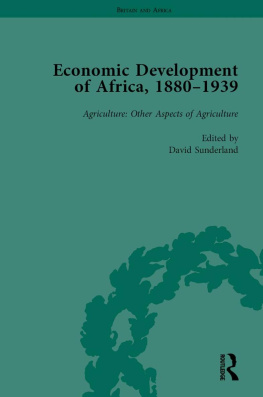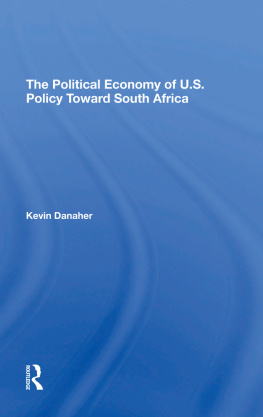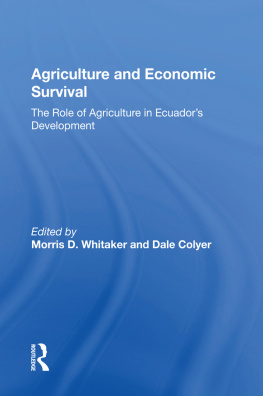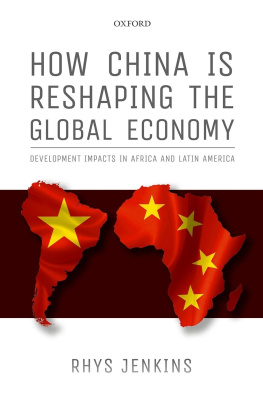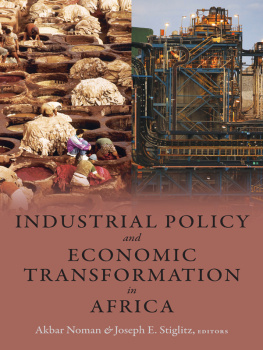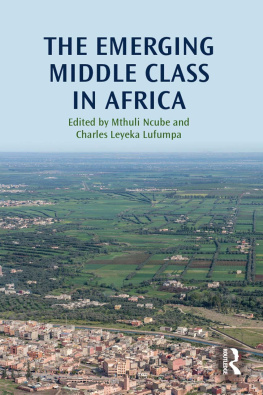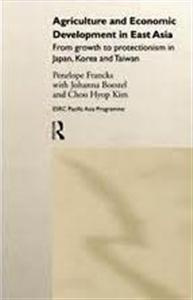ECONOMIC DEVELOPMENT OF AFRICA, 18801939
CONTENTS OF THE EDITION
VOLUME 1
General Introduction
Agriculture: Non-Food and Drink
VOLUME 2
Agriculture: Food and Drink
VOLUME 3
Agriculture: Other Aspects of Agriculture
VOLUME 4
Non-Agricultural Development
VOLUME 5
Labour and Other Aspects of Development
Index
ECONOMIC DEVELOPMENT OF AFRICA, 18801939
GENERAL EDITOR
David Sunderland
ADVISORY EDITOR
Godfrey N. Uzoigwe
Volume 3
Agriculture: Other Aspects of Agriculture
First published 2011 by Pickering & Chatto (Publishers) Limited
Published 2016 by Routledge
2 Park Square, Milton Park, Abingdon, Oxon OX14 4RN
711 Third Avenue, New York, NY 10017, USA
Routledge is an imprint of the Taylor & Francis Group, an informa business
Copyright Taylor & Francis 2011
Copyright Editorial material David Sunderland 2011
All rights reserved, including those of translation into foreign languages. No part of this book may be reprinted or reproduced or utilised in any form or by any electronic, mechanical, or other means, now known or hereafter invented, including photocopying and recording, or in any information storage or retrieval system, without permission in writing from the publishers.
Notice:
Product or corporate names may be trademarks or registered trademarks, and are used only for identification and explanation without intent to infringe.
BRITISH LIBRARY CATALOGUING IN PUBLICATION DATA
Economic development of Africa, 18801939. (Britain and Africa) 1. Great Britain Colonies Africa Economic conditions. 2. Great Britain Colonies Africa Economic policy. 3. Agriculture Africa History 19th century. 4. Agriculture Africa History 20th century. 5. Industrialization Africa History 19th century. 6. Industrialization Africa History 20th century. 7. Economic development Social aspects Africa History 19th century. 8. Economic development Social aspects Africa History 20th century. I. Series II. Sunderland, David, 1958325.341096-dc22
ISBN-13: 978-1-84893-063-6 (set)
Typeset by Pickering & Chatto (Publishers) Limited
To this point, the collection has been devoted to an examination of specific agricultural sectors. The first six sources in this section, by contrast, trace the development and discuss the nature of agriculture in particular countries or regions.
The first three sources examine respectively the state of agriculture in the inter-war period in Southern Rhodesia (see Report of the Committee of Enquiry into the Economic Position of the Agricultural Industry of Southern Rhodesia (1934), below), Northern Rhodesia (see Milligan, Report on the Present Position of the Agricultural Industry and the Necessity, or Otherwise, of Encouraging Further European Settlement in Agricultural Areas (1931), below) and South Africa (see Does Farming Pay in South Africa? ([early 1920s]), below) and seek to recommend ways in which the efficiency and profitability of the industries could be improved. The conclusions of the first source are somewhat surprising. Rather than criticizing the efficiency of the farming community, the report rather celebrates its innovativeness and entrepreneurialism, blaming its poverty in the 1930s on the tendency of farmers to overstretch themselves financially in order to fund agricultural improvements. Of the many proposals put forward, the most important are perhaps the state marketing of crops; greater specialization in the growth of maize, tobacco and the rearing of cattle; the introduction of measures to limit soil erosion and drought, and alterations in the operation of the land bank, all of which were adopted. Similar conclusions are reached by the author of the second source, who proposes the establishment of farmer associations and cooperatives; changes in the regulations of the Agricultural Loans Fund, which possessed some of the functions of a land bank; and the adoption of new agricultural practices. By contrast, the author of the third source is more sceptical as regards the abilities of the European farmer drawing attention to the sickly, untidy fields, sagging fences, [and] ramshackle outbuildings of some homesteads (below, p. 107). He insists, however, that all is not lost. By extending the range of crops grown, better management of African labour and the adoption of scientific methods of cultivation, farming in the region could indeed be made to pay.
The spotlight then moves onto West Africa and Kenya. The fourth source (Lardner, The Agricultural Question), published in 1880, attempts to assess the agricultural possibilities of West Africa, and in particular Sierra Leone, describing the local African farming sector and the ways in which this could be extended and made more efficient to the advantage of British traders. The following two reports then investigate West African agriculture respectively thirty and forty years later, concentrating on the Gold Coat (see Barbour James, The Agricultural and Industrial Possibilities of the Gold Coast (1911), below) and the Gambia (see Dawe, Report on the Agricultural Conditions and Needs of the Gambia (1921), below). The vision of an efficient and prosperous African cash-cropping sector depicted in the previous source has now become a reality and the reports describe in great detail the crops grown, the farming methods adopted and the ways in which output could be further increased. Barbour Jamess text, a cornucopia of facts and advice, additionally contains quite lengthy descriptions of local agricultural shows that give a valuable insight into how agriculture was practised at farm level. The next source provides a detailed description of the state of agriculture in Kenya in the 1920s and argues that greater productivity and profitability could only be achieved by an expansion of the local Department of Agriculture (see Holm, Review of Agriculture in Kenya (1926), below).
The final material concentrates on two major problems faced by farmers disease and pests and the lack of credit. Disease and pests did much to reduce the profitability of African agriculture. Cattle on the continent were prone to a range of infections including anthrax; rinderpest, an infectious viral disease; and nagana, a form of sleeping sickness spread by the tsetse fly. By far the most destructive was rinderpest, which in 18908 killed over 95 per cent of South African and Southern Rhodesian cattle. The epidemic not only destroyed the livelihoods of ranchers, forcing them into the wage-earning economy, but also disrupted the cultivation of crops and transportation through the death of plough-drawing and cart-pulling oxen; increased infant mortality by depriving children of essential dietary requirements; weakened the relationship between African and European farmers, who blamed each other for the arrival and spread of the disease; and threatened the very social fabric and political stability of African societies, cattle ownership being a measure of status. Attempts to eradicate the infection included the introduction of quarantines and the slaughter of infected animals, which precipitated the Langeberg Rebellion of 1896; the construction of a fence south of the Orange River; and the prophylactic inoculation of cattle with antitoxic serum and fresh green bile, which finally brought the epidemic to an end.1 Elsewhere, attempts to combat other cattle diseases were less successful. The eradication of anthrax in South Africa was frustrated by a lack of veterinary resources and by the reluctance of both European and African farmers to comply with government decrees; whilst nagana was only fully contained in the 1950s with the use of DDT to exterminate the tsetse fly.2

